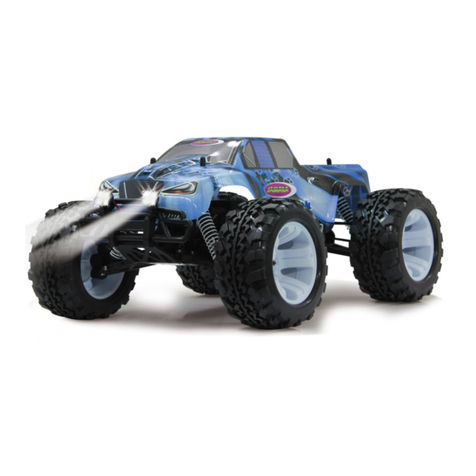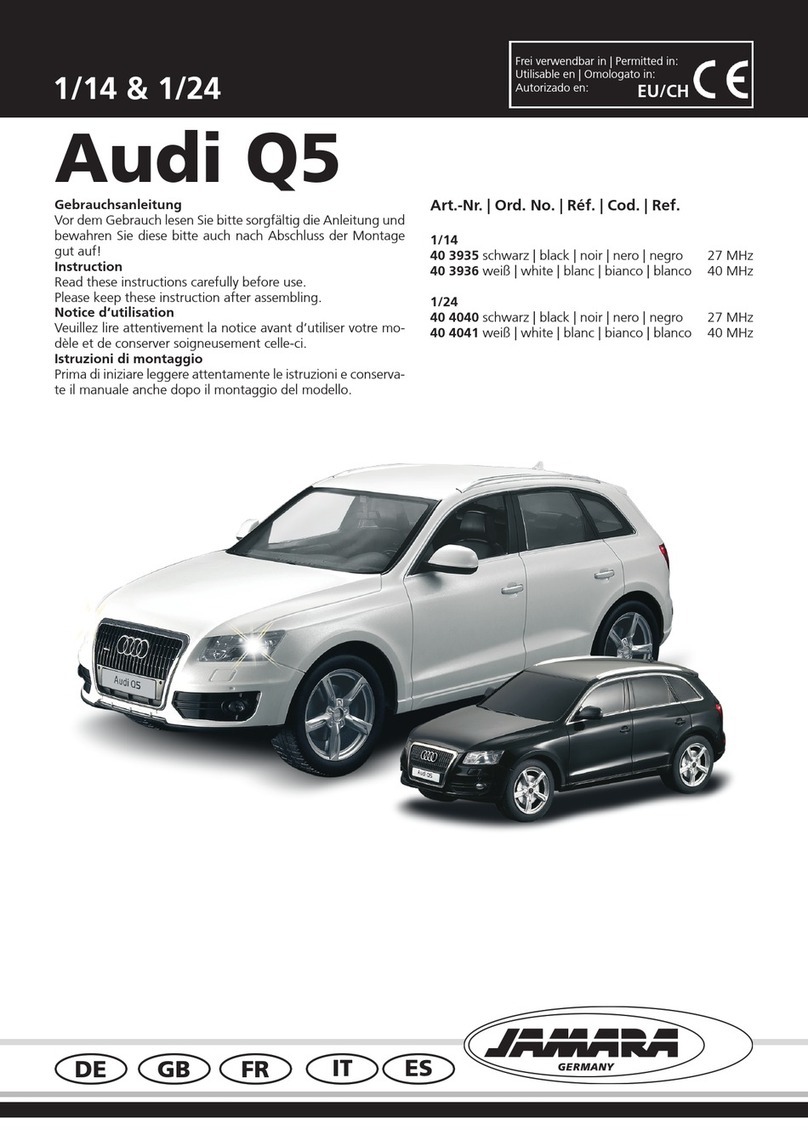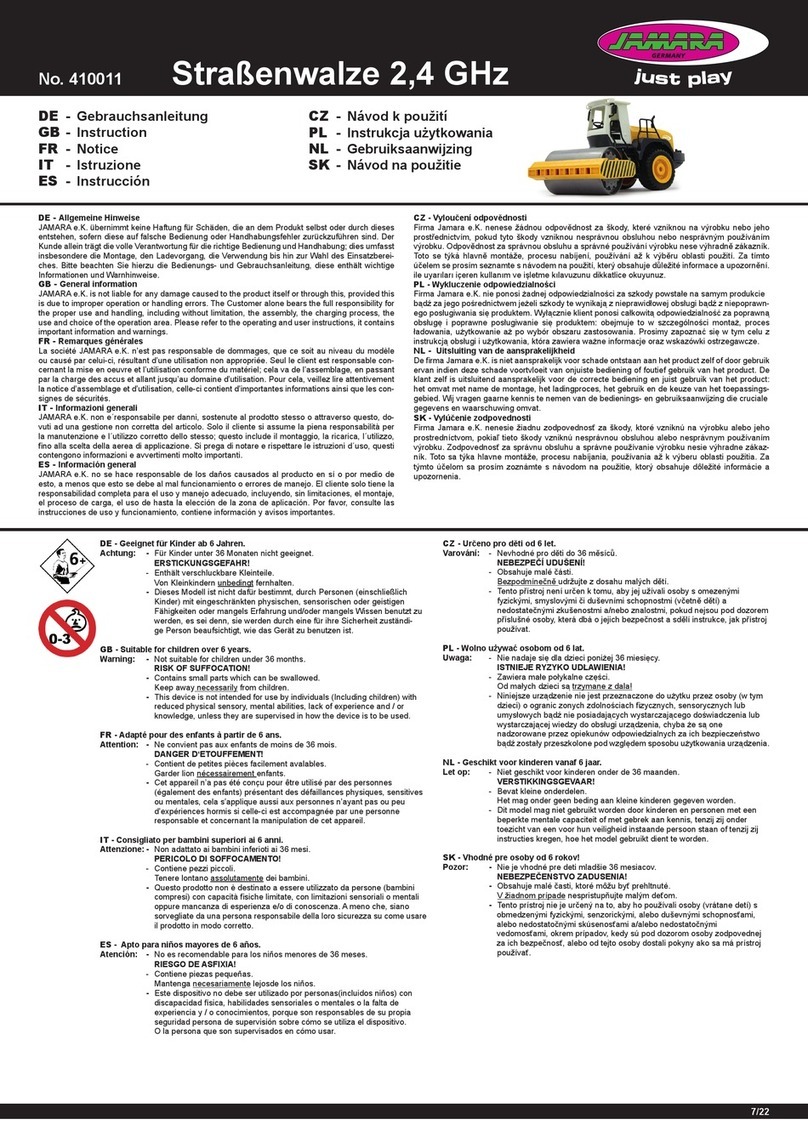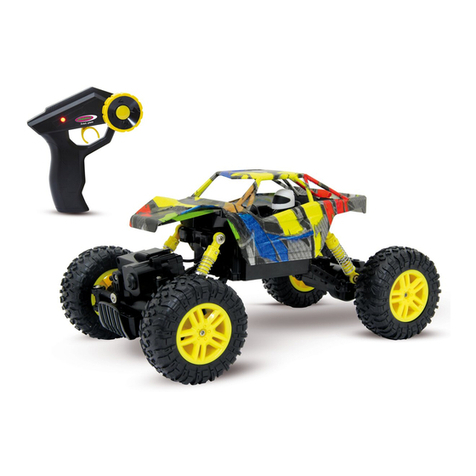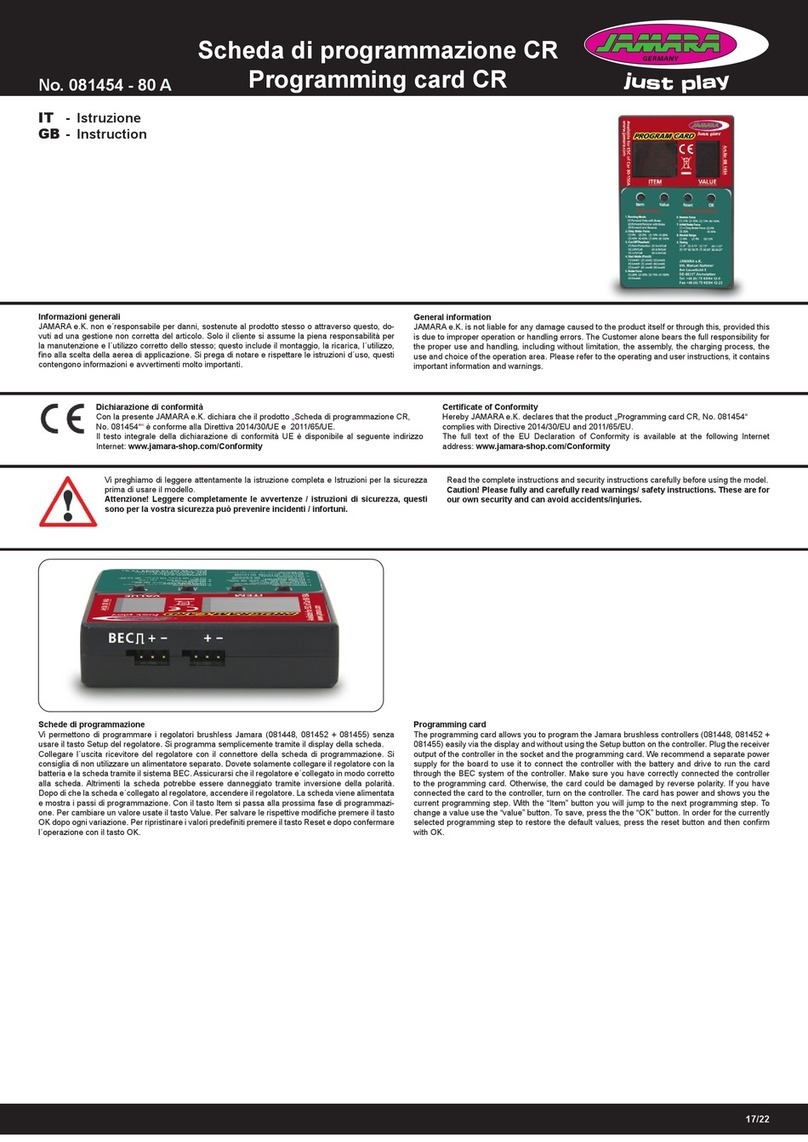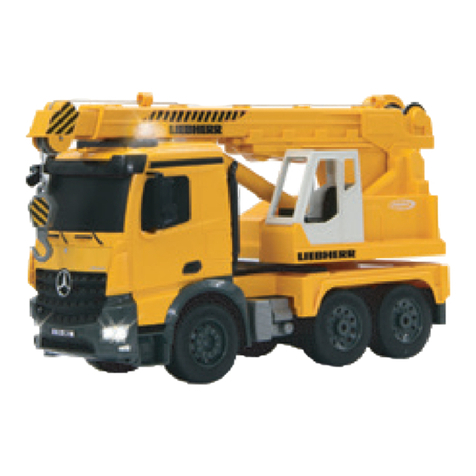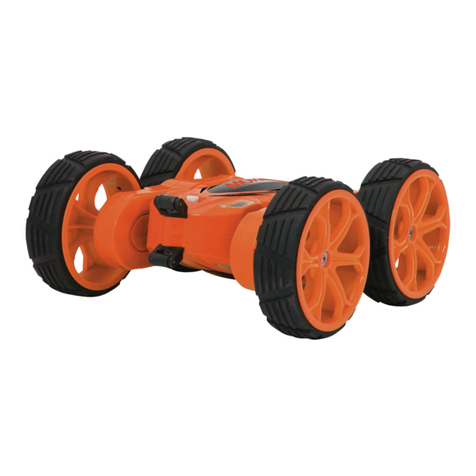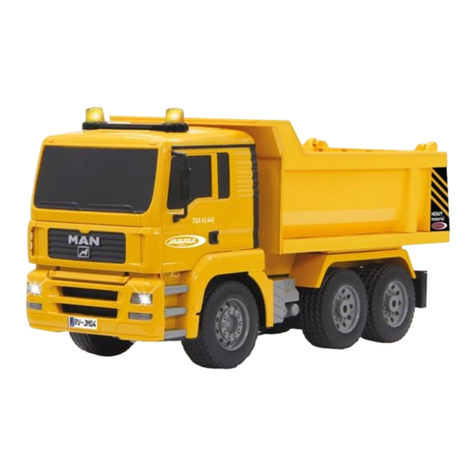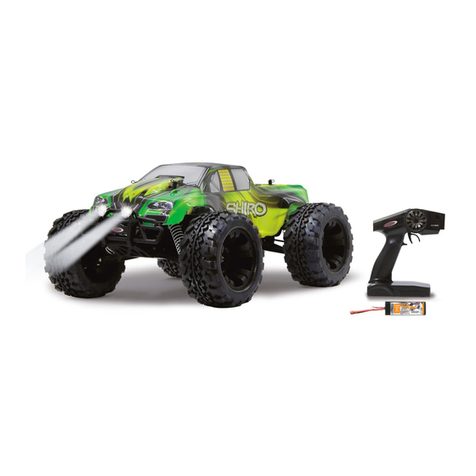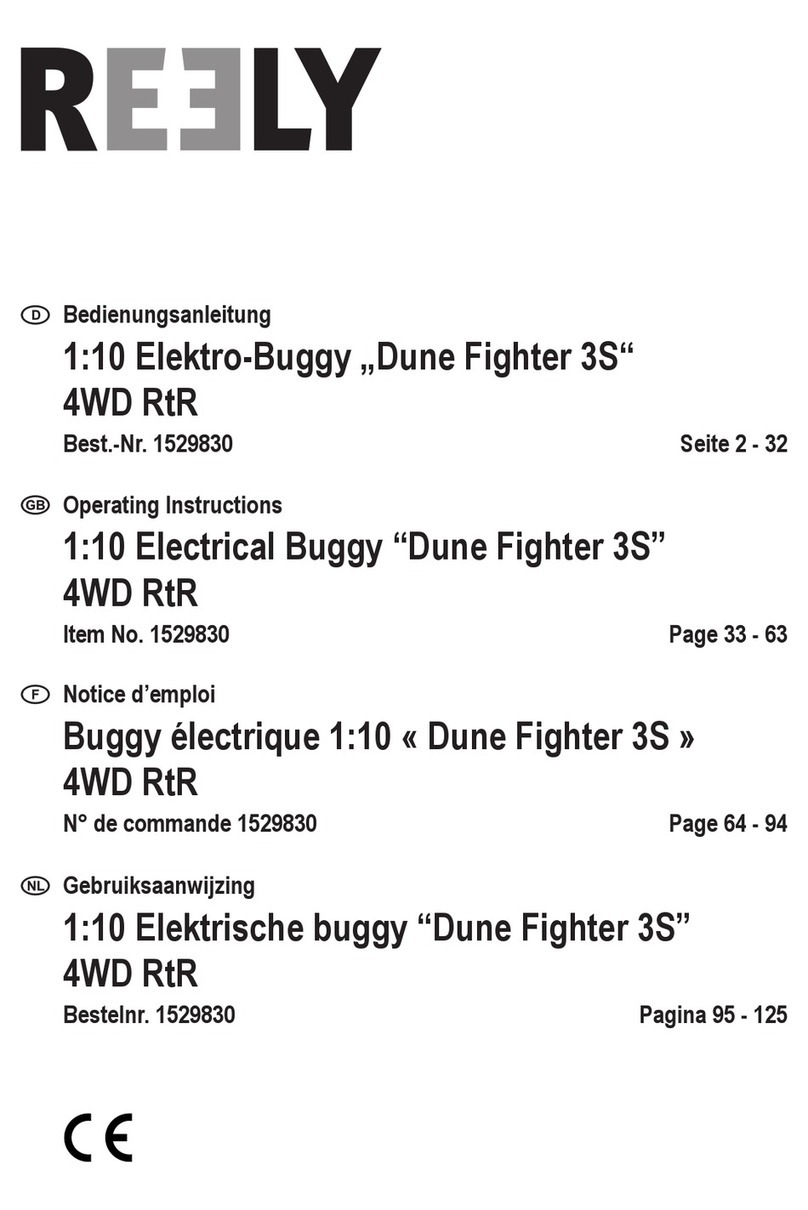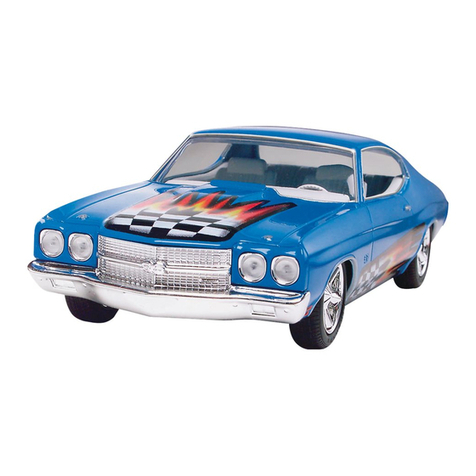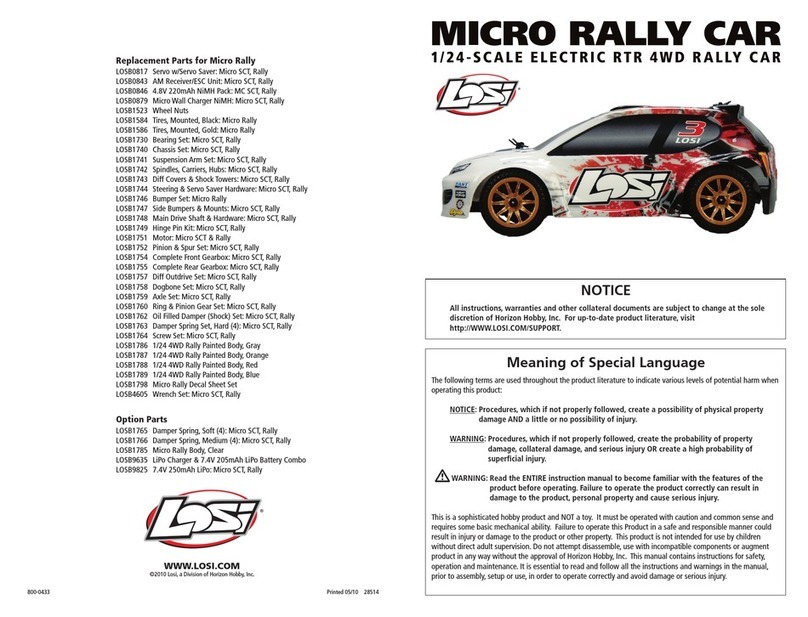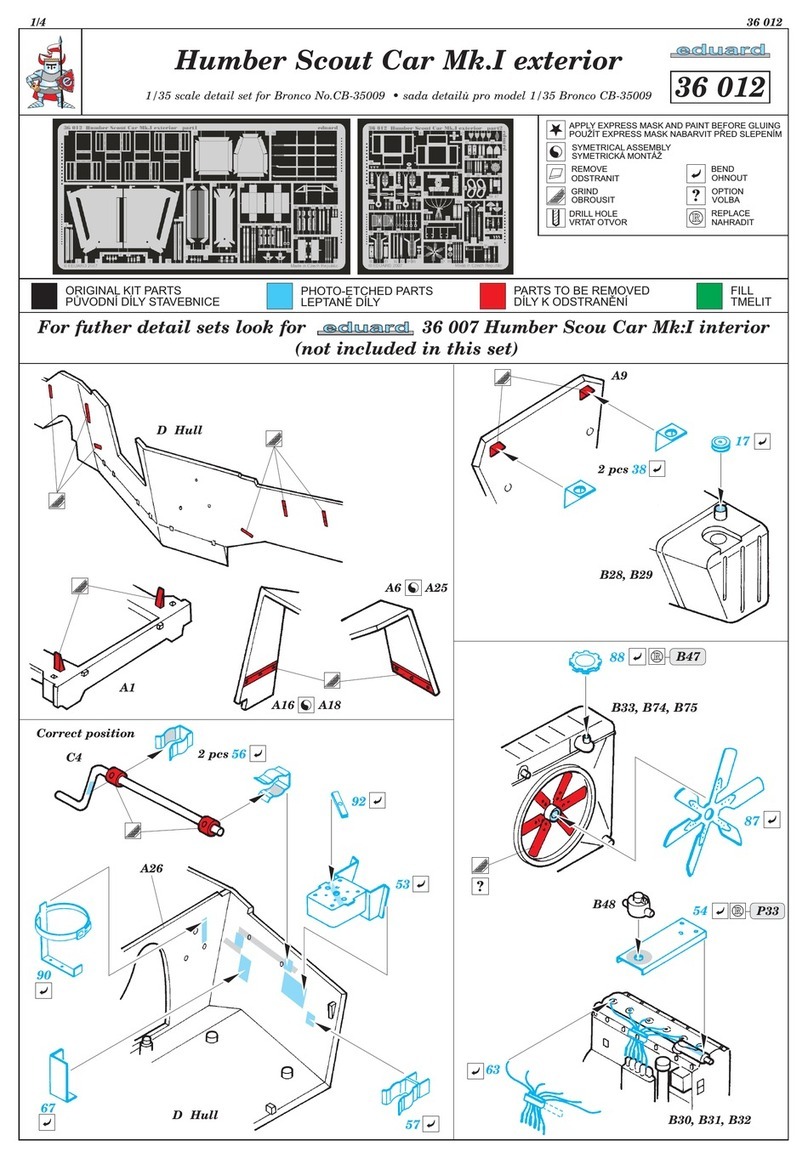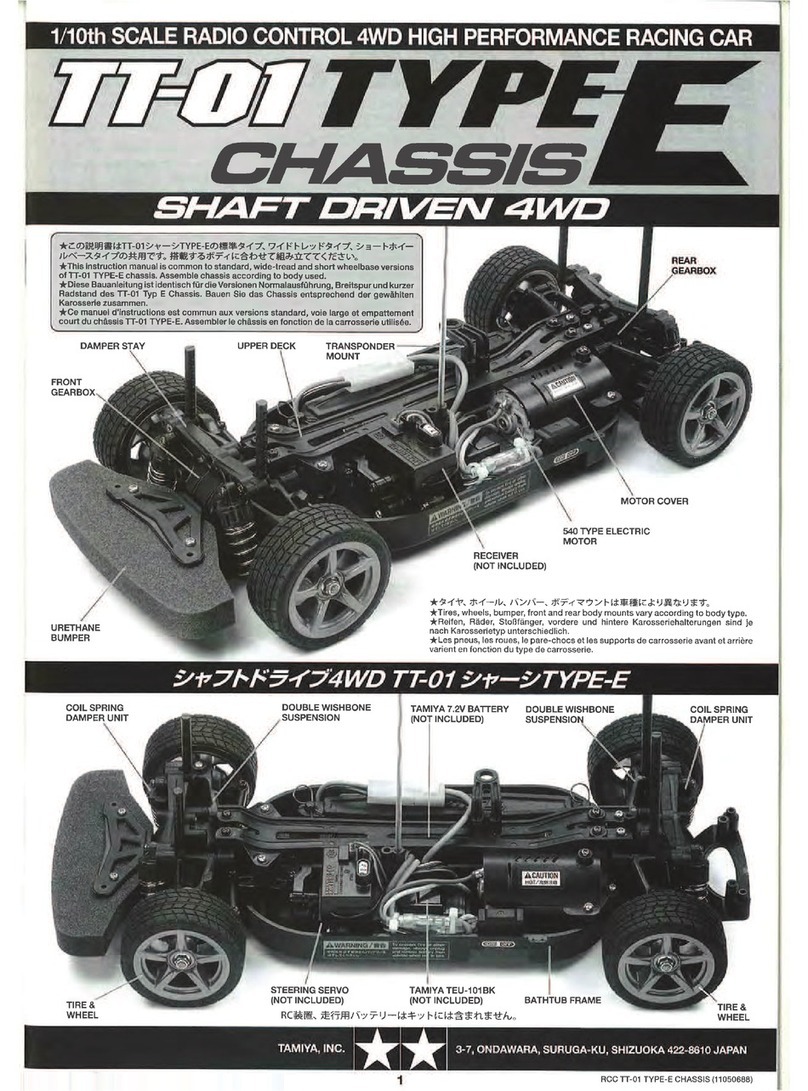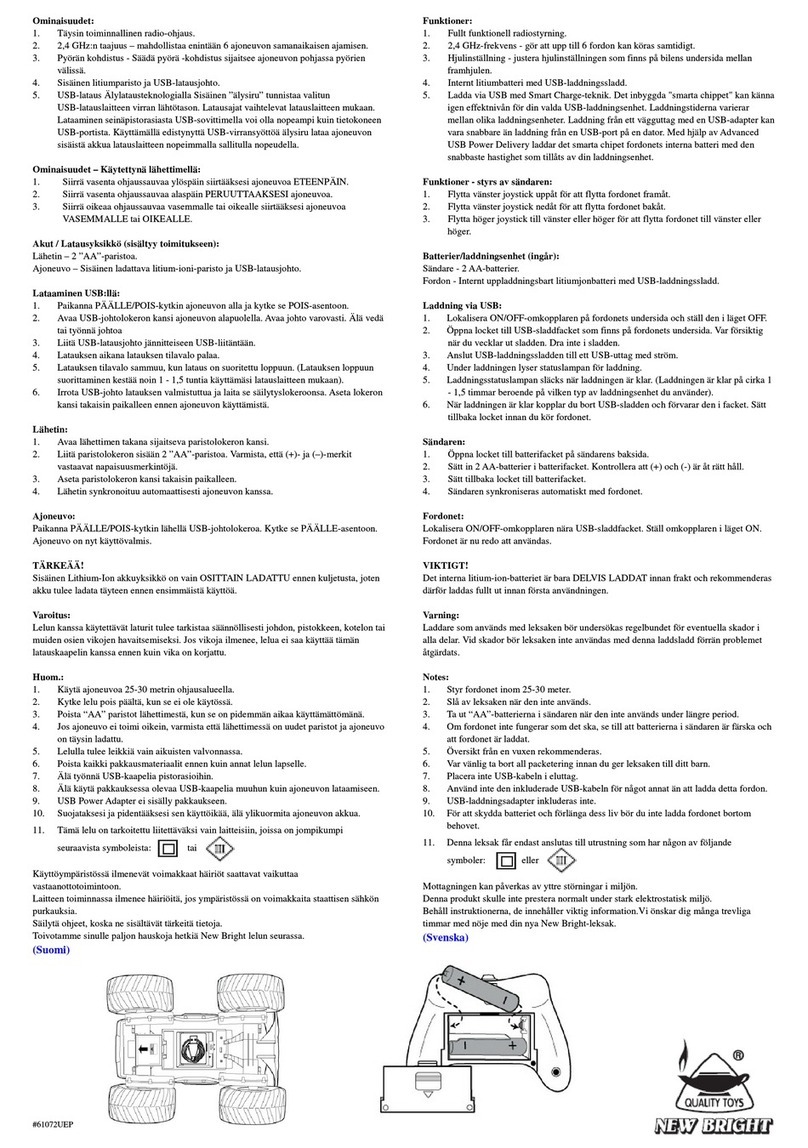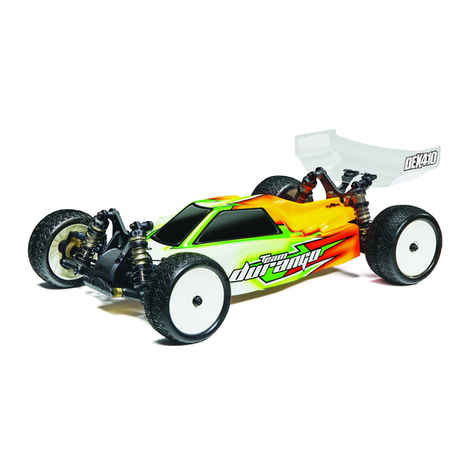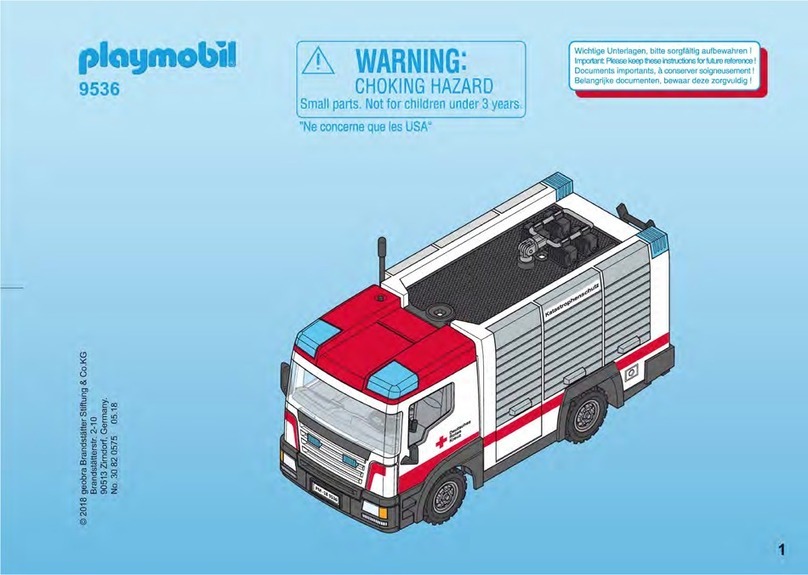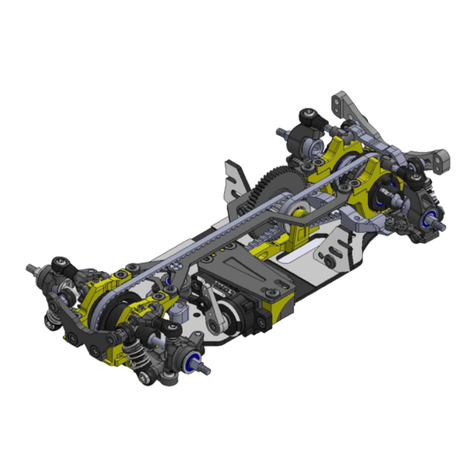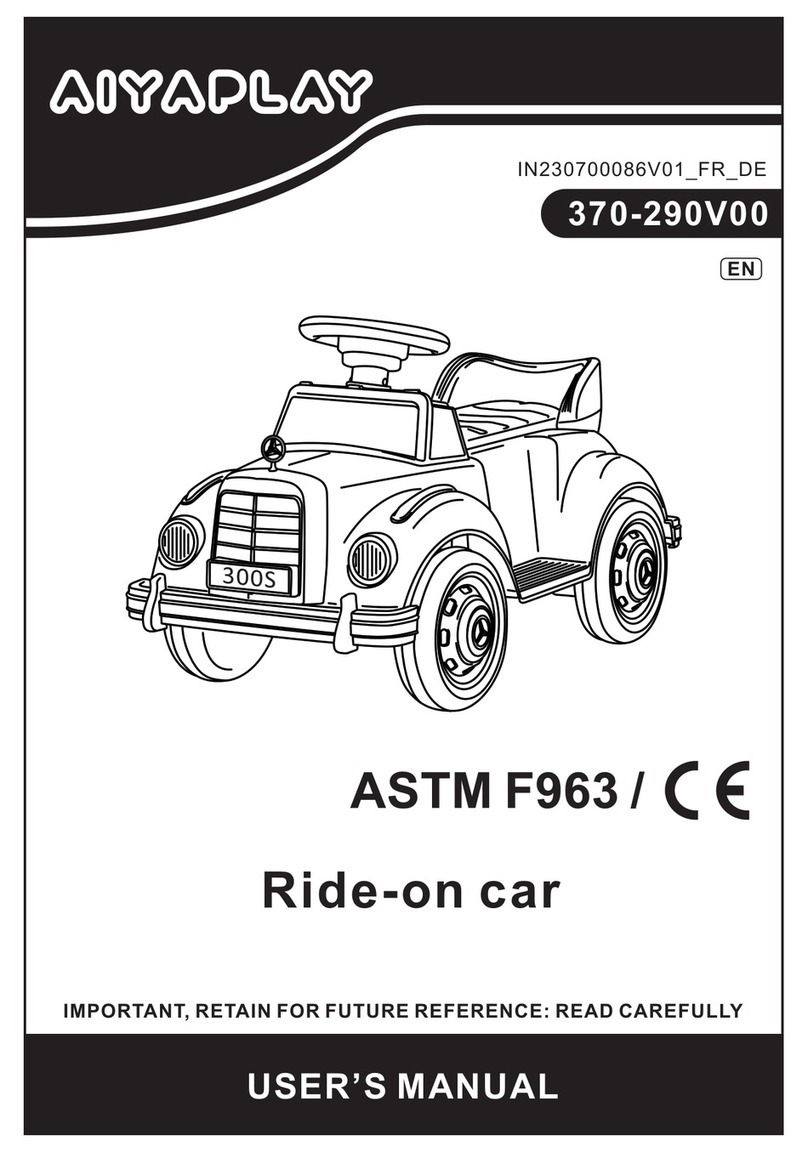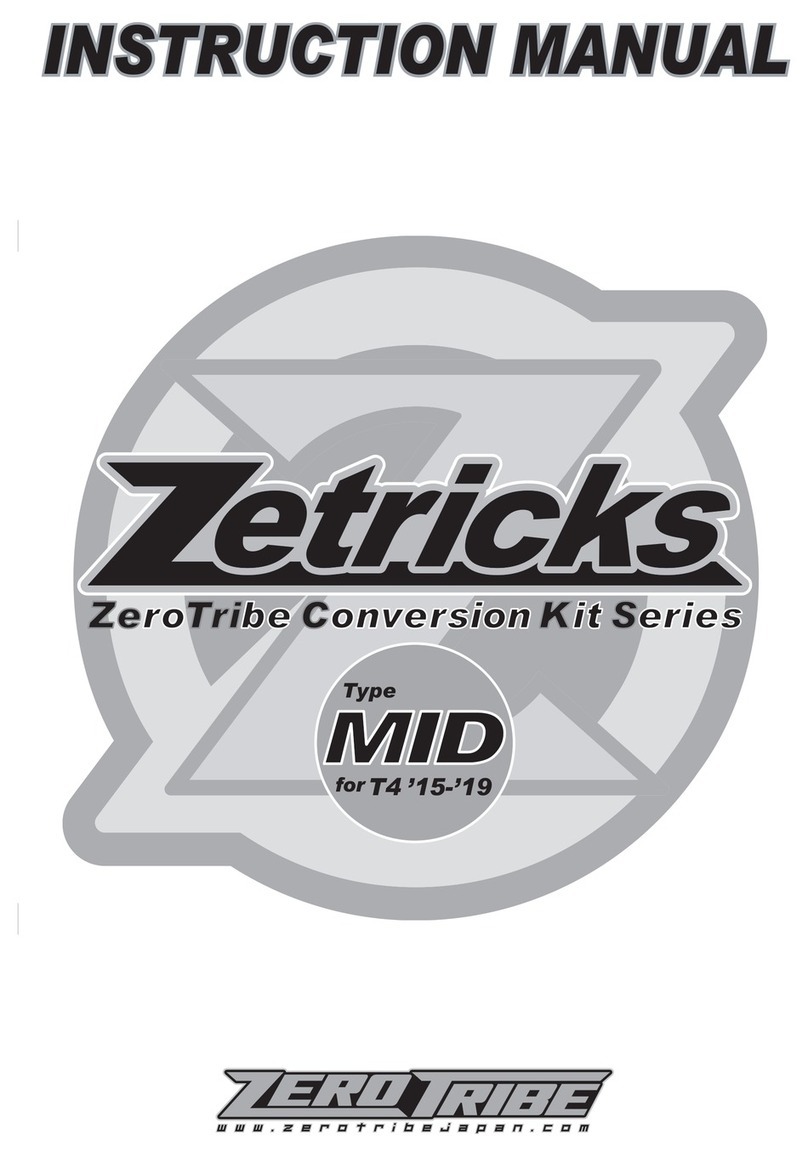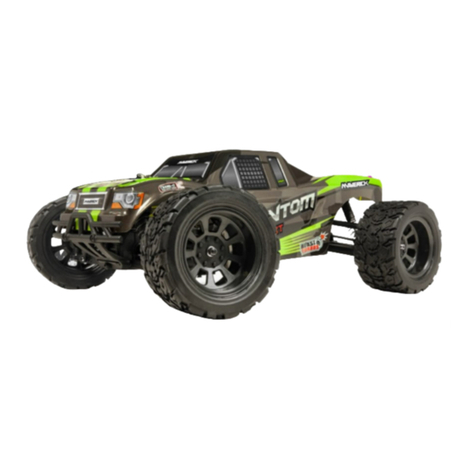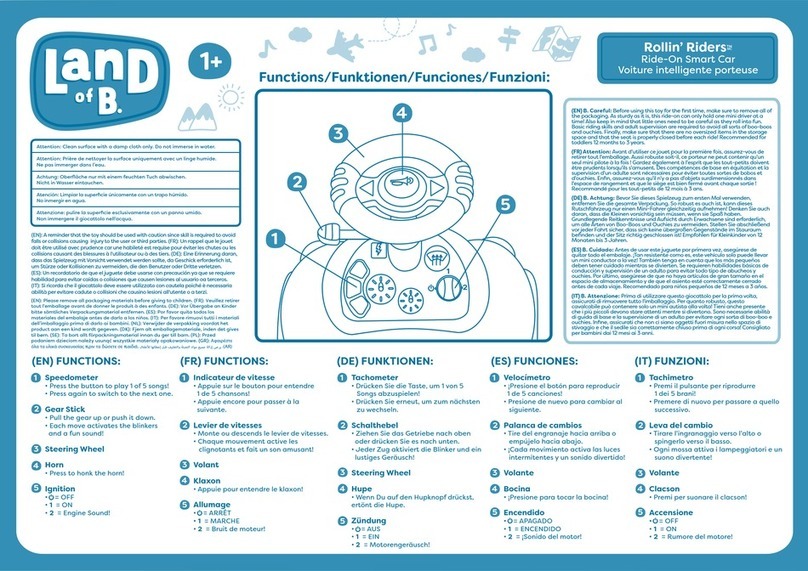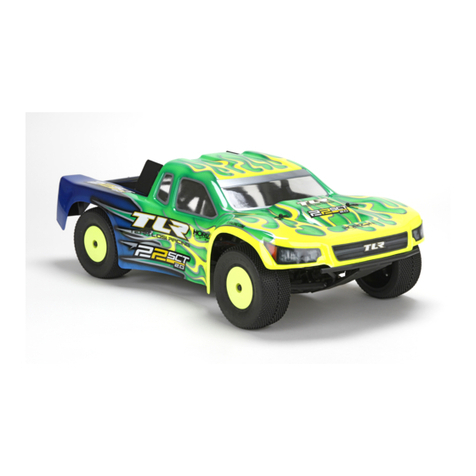
2
IT - Sommario
Istruzioni per la sicurezza 2
Informazioni generali 4
Dichiarazione di conformita’ 4
Disposizioni per l‘eliminazione nel Rispetto dell‘ ambiente 4
Contenuto del kit 4
Dati tecnici | Highlights 4
Attrezzi consigliati 7
Primi passi 8/10
Trasmittente 12 - 17
Regolatore 18 - 29
Informazioni sull’uso degli accumulatori 30/32
Risoluzione dei problemi 34
Montaggio 35 - 42
Impostazione dell’assetto / sospensione 43 - 47
Pezzi di ricambio 48 - 51
Pezzi di tuning 52/53
Capacità diagramma 54
Istruzioni per la sicurezza
Questo modello non e‘ un giocattolo!
Consigliato per persone superiori ai 14 anni!
Attenzione: Non adattato ai bambini inferioti ai 36 mesi.
Pericolo di affogamento.
Contiene pezzi piccoli.
ATTENZIONE!
• Vi preghiamo di leggere attentamente le istruzioni prima di
usare il modello. Sollevare la scatola e istruzioni!
Istruzione di sicurezza per l’uso
• Este dispositivo no debe ser utilizado por personas(incluidos
niños) con discapacidad física,habilidades sensoriales o
mentales o la falta de experiencia y / o conocimientos, porque
son responsables de su propia seguridad persona de
supervisión sobre cómo se utiliza el dispositivo.
O la persona que son supervisados en cómo usar.
• Mantenga el modelo lejos de los niños, por lo que el modelo
no es adecuado (ver nota en edad).
• I modelli volanti radiocomandati non sono giocattoli, per cui
devono essere usati da persone responsabili in grado di
intendere.
• Seguite attentamente le istruzioni per ottenere un modello
afdabile, ricordando che voi sarete i responsabili per la
costruzione ed il successivo uso.
• Nel montaggio vengono usate attrezzi e coltello. Siete pregati
di lavorare con la massima prudenza.
• In caso di uso di colle e colori (non compresi nella scatola),
osservare il manuale fornito.
• Tenete sempre queste istruzioni a portata di mano per
eventuali consultazioni anche una volta nita la costruzione
• Tenete sempre queste istruzioni a portata di mano per
eventuali consultazioni anche una volta nita la costruzione
• Tenete mani, capelli e parti svolazzanti lontane da parti
rotabili.
• Tenetevi sempre lontani dalle parti rotanti..
• Evitate di volare con vento forte, pioggia o temporale,attenti
alle scariche elettriche temporalesche sull‘ antenna della
vostra radio!
• Non usate il modello nelle vicinanze di stazione radio, linea
di alta tensione, casse di trasformazione oppure simile. Quete
installazioni causano disturbi frequenza che portano alla perd -
ita del controllo no alla perdita del modello.
• Sempre in aree libere legalmente autorizzate, lontane da altri
ostacoli.
• Controllare che nessun altro usi la stessa frequenza, per
evitare danni sul modello, persone e oggetti.
• Ogni modica alle parti di un kit ne annulleranno la garanzia.
• Non esponete il modello o le batterie a lungo ai raggi solari
meglio tenerli all‘ ombra.
Istruzioni generali di sicurezza
• Ogni kit contiene piccoli pezzi che potrebbero essere
inghiottiti da bambini, per cui vi consigliamo di tenere lontani i
bambini durante il montaggio di un modello.
• Evitare l’uso del modello nei posti affollati e nella vicinanza di
bambini. Mai usare il modello su luoghi e stradi pubblichi.
• Non usare mai il modello su un area bagnata / umida. Rischio
di danneggiare la parte elettronica. In caso che il modello
abbia preso umidità, assicurarsi che tutto si asciuga bene per
garantire il funzionamento.
• I principianti dovranno farsi assistere da un modellista esperto
ed é bene anche che si associno ed un gruppo modellistico
che li coprirà con una polizza assicurativa oltre che con l‘ aiuto
di piloti esperti.
• Controllare regolarmente il modello, la trasmittente e il cavo di
carica su danneggiamenti. Non usare la parte danneggiata
nche non sia rimessa in ordine. Per i danni derivanti
dall‘attività operativa creato un modello dei titolari devono
aderire.
• Ricordate che il vostro medello é costruito con materiali
inammabili, perciò tenetelo lontano da amme libere .
• Accendete sempre prima la trasmittente e poi la ricevente,
mentre per lo spegnimento usate la procedura inversa.
• Quando accendete la vostra radio, assicuratevi SEMPRE che
lo stick del gas sia al minimo.
Informazioni importanti per l’uso
di batterie a pacchi ricaricabili
• Badare la polarità delle batterie e il modo d’inserimento.
• Non caricare mai batterie non ricaricabili.
• Togliere il pacco batteria del modello per caricarlo (per quanto
previsto)
• Caricare il pacco batteria sempre sotto sorveglianza di adulti.
• Non usare mai batterie di tipi diversi, oppure batterie nuove
con quelle usate.
• Inserire le batterie facendo attenzione alla polarità.
• Togliere il pacco batteria scarico dal modello.
• Evitare in ogni caso il contatto dei contatti (coro circuito).
• Il pacco batteria fornito non è caricato. Prima dell’uso,
caricatelo.
• Non caricare il pacco batteria subito dopo l’uso del modello.
Fare raffreddare il pacco batteria prima della carica.
• Evitare il corto circuito! Questo potrebbe causare un
inammazione e di sicuro accorciano la vita del pacco
batteria.
• Usare solo il caricatore fornito per la ricarica.
• Tenere lontano le batterie e pacchi ricaricabili dai bambini.
Istruzioni per la carica dei pacchi ricaricabili
• Collegare il pacco batteria con il cavo caricatore.
• Collegare la presa del caricatore alla corrente.
• Caricare la batteria no che e completamente carica!
• Una volta terminata la carica, togliere la presa dalla corrente e
disconnettere il pacco batteria dal cavo caricatore. Il pacco
batteria è pronto per l’uso.



